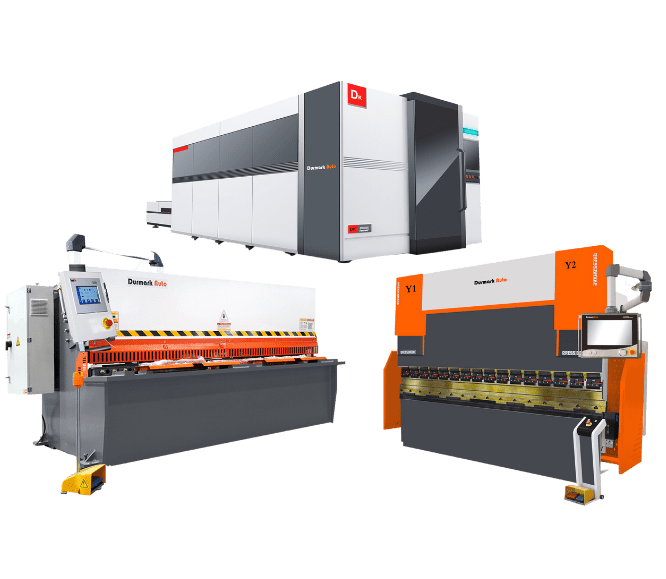
Request a Quote

Request a Quote


As the manufacturing industry continues to evolve, press brakes are gaining increasing recognition as a core tool in the field of metal fabrication. Capable of bending metal sheets according to specific requirements, press brakes provide precise components and parts for various industries. However, to ensure that press brakes perform at their best, the significance of proper setup and installation cannot be underestimated. Building upon the foundational content provided by the website, this article delves deeper into the setup and installation guide for press brakes, while also highlighting key considerations, leading readers to a more comprehensive understanding of this crucial process.
Equipment Position Selection: When choosing the installation location for a press brake, multiple factors need to be considered. Firstly, it's essential to ensure that the equipment is placed on a solid and level surface to prevent vibrations caused by an unstable foundation. Additionally, factors such as the operator's workspace, safety zones around the machine, and potential environmental impacts should also be taken into account.
Foundation Construction: The stability of the equipment is closely tied to the quality of its foundation structure. To ensure that the press brake maintains stability during the machining process, the foundation must undergo careful design and construction. Considerations should include the foundation's dimensions, materials, and reinforcement methods to ensure that it can withstand the machine's weight and the forces generated during operation.
Electrical and Hydraulic Connections: Press brakes often involve complex electrical and hydraulic systems. When connecting these systems, it's crucial to follow the correct procedures to ensure accurate cable and pipeline connections. After the connections are completed, system functionality tests and pressure tests should be conducted to ensure that all components operate smoothly.
Safety Operation Training: Equipment operators must undergo comprehensive safety operation training. This includes familiarizing operators with normal operational procedures, emergency shutdown protocols, personal protective measures, and more. Only by understanding these aspects can operators maintain a high level of vigilance during operations and reduce the risk of accidents.
Equipment Inspection and Debugging: After the installation is completed, conducting a thorough inspection and debugging process is crucial to ensure proper functioning. All mechanical components, sensors, hydraulic valves, and other parts should be inspected to ensure that they are secure and undamaged. Sample processing should be carried out to verify the precision and stability of the press brake.
Development of Maintenance Plans: Maintenance is a vital aspect of ensuring the long-term, consistent operation of the press brake. Formulating detailed maintenance plans, including lubrication, cleaning, and fastener inspections, can prolong the lifespan of the equipment and reduce maintenance costs.

As a vital equipment in the realm of metal fabrication, press brakes continue to evolve in tandem with technological advancements. New automation and intelligent technologies have been introduced, enabling press brakes to conduct processing more efficiently, thereby enhancing production efficiency and product quality.
Cost of Installation and Influencing Factors for Press Brakes
Within the process of press brake setup, installation costs often represent the highest expenditure. Not only does it lack tangible product output, but costs also increase as setup time prolongs. The time required for setup directly impacts the quantity of finished products that can be produced within a specific timeframe, consequently affecting the efficiency and profitability of the press brake. Hence, ensuring a rapid and efficient setup process is of paramount importance.
In press brake operations, striving for swift setup is a key factor in boosting production efficiency. When producing a large volume of components, using similar setups can lower the cost per component. Operators can achieve this by mastering rapid setup techniques, enabling the production of more components at a lower cost. This entails operators gaining proficiency in various setup techniques and effectively applying them during practical operations, thus enhancing overall production efficiency.

Before commencing the bending process, operators need a thorough understanding of the characteristics of the required components. This includes material type, flange dimensions, angle requirements, radii, and more. Accurate blueprints provide operators with precise processing requirements, preventing inaccurate processing due to lack of information. Based on these blueprints, operators can choose suitable fixtures such as air bending, bottom bending, coining, etc., to fulfill diverse processing needs.
Choosing a press brake involves considering various factors, including tonnage and working width. Tonnage per inch is a crucial metric for assessing press brake performance, and operators should also consider their capacity and experience in operating the machine. Ensuring that the chosen press brake is suitable for the current task is essential for achieving optimal processing results.
The positioning and setup of tools are paramount for processing outcomes. Operators need to accurately determine the tool's position during the setup process, ensuring proper alignment of top and bottom tools for precise bending. Tool installation is the most time-consuming aspect of the setup process; however, it significantly influences the subsequent quality of processing.
Upon completion of the setup, operators need to create the machining program for the press brake. Whether it's manual operation or CNC operation, programming is a critical step. While manual programming may require some experimentation, CNC machines generally enable faster automated processing. The accuracy of the program directly influences the precision and efficiency of the machining results.

The proper setup and installation of press brakes form the cornerstone of ensuring machining quality and operational efficiency. By adhering to the correct installation steps, paying attention to crucial safety considerations, and formulating maintenance plans, we can ensure that press brakes consistently perform at their best throughout the production process. Furthermore, staying attuned to the continuous development of new technologies will contribute to further enhancing the performance and application scope of press brakes.If you are looking for a reliable press brake supplier, please feel free to contact Durmark We are a leader with many years of experience.
.png)



